Japanese robotics company Omron and its table-tennis-playing bot are back at CES to serve up loads of fresh new tech.
This year, though Omron may have reincarnated its crowd-pleasing table tennis bot, called Forpheus, the company managed to up the ante with a new emotional recognition system that gauges players’ frustration level and their skill.
In addition to being fun, Omron wants Forpheus to showcase its work in AI, computer vision and robotics.
Its system, which watches players closely as they battle the bot in ping pong, has the capability of reading a players’ face and even their heart rate and then interpreting that information to make inferences on skill and state-of-mind.
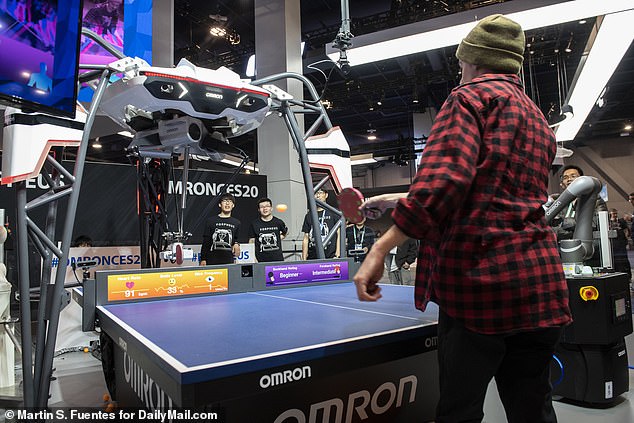
Forpheus (pictured above) can reach to a volley using computer vision. A newer feature, however, uses emotional recognition to simultaneously gauge a player’s enjoyment
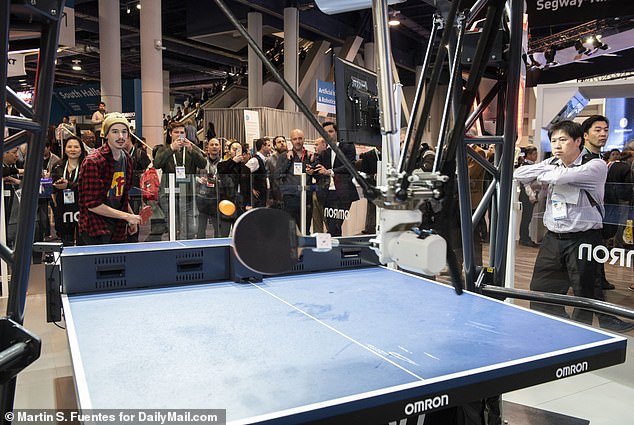
If Forpheus senses that a player is frustrated, it will change the difficulty to match the opponents skill. It uses data like facial expressions and heart rate
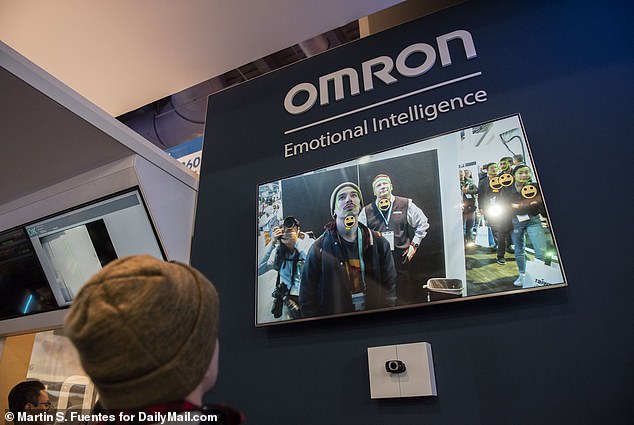
Pictured above is Omron’s emotional recognition software. The camera had a somewhat difficult time reading sadness or anger but worked exceptionally well for smiling
Forpheus can then adjust its functionality to suit a players level – a capability that could allow the bot to train both experts and beginners alike on the fly.
In a demonstration with MailOnline, we got a sense for just how smart Omron’s systems are.
While initial volleys with the bot were decidedly outmatched in its favor, Forpheus quickly readjuted its level of play to a more equitable standing.
‘If you were frustrated a little bit in the beginning, it sensed that and then eased off a little bit and made it a little be easier to keep you encouraged,’ Keith Kersten, Omron’s Marketing Group Manager told MailOnline.
‘Like any good coach, being able to not just look at your skill level but also how you’re doing emotionally – that’s really how you bring out the best in people.’
Omron thinks that is computer vision and AI can be used for applications in a factory to inspect parts or even in mobile phones to detect when someone smiles – the latter use could enable a phone to take a pic automatically.
Though this year’s CES brought Omron’s broader offerings in AI and computer vision, it’s primary focus is still on applying those types of technologies to factor floors and manufacturing.
In that vein, one of the company’s newest gadgets is a ‘collaborative’ robotic arm that can be easily programmed by moving the bot into different positions and then saving the pattern with a push of a button.
The bot is intended to be extremely easy to use and program even for someone with no experience.
In a demo with MailOnline, a representative for Omron was able to explain, show, and teach how to use the bot in a matter of minutes.
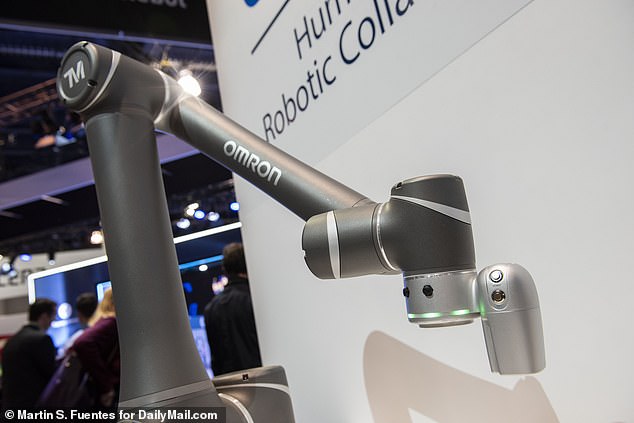
A ‘collaborative robot’ from Omron is programmable by users of almost any experience level
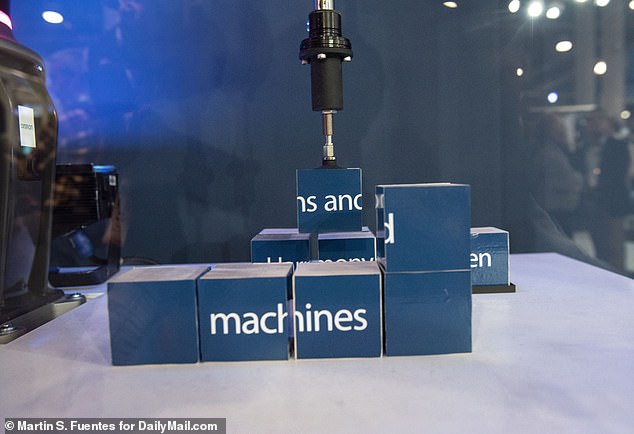
Above is Omron’s AI-enabled factory arm that can tell when its need of repairs. This ability will help factor owns avoid catastrophic shutdowns
Similarly, the company showcased an AI robotic arm that uses Omron’s technology to assess whether the tool is in need of repairs.
For someone who owns a factory where robots are used to package or assemble products, this particular tool could generate significant cost savings.
‘One of the worst things, if you are manufacturing something is when your factory is down and you’re not making products for your customers,’ said Kersten.
‘So by having something that can know it’s going to be break down and you can fix it at a convenient time for you as opposed to stopping everything, it’s a major benefit.’
Omron says that it’s AI repair-sensing bot has yet to go on sale, but the company expects to be selling them late this year.